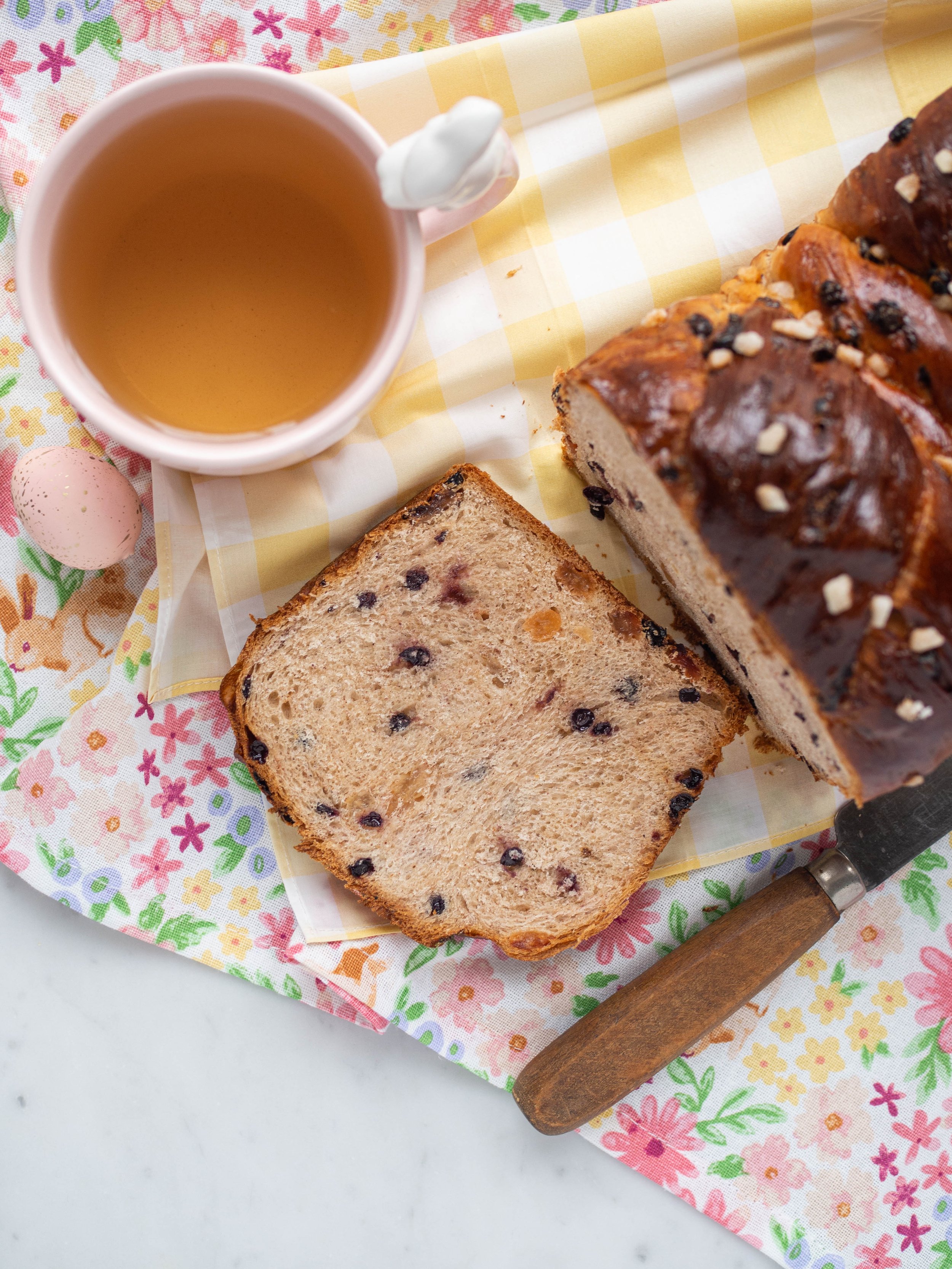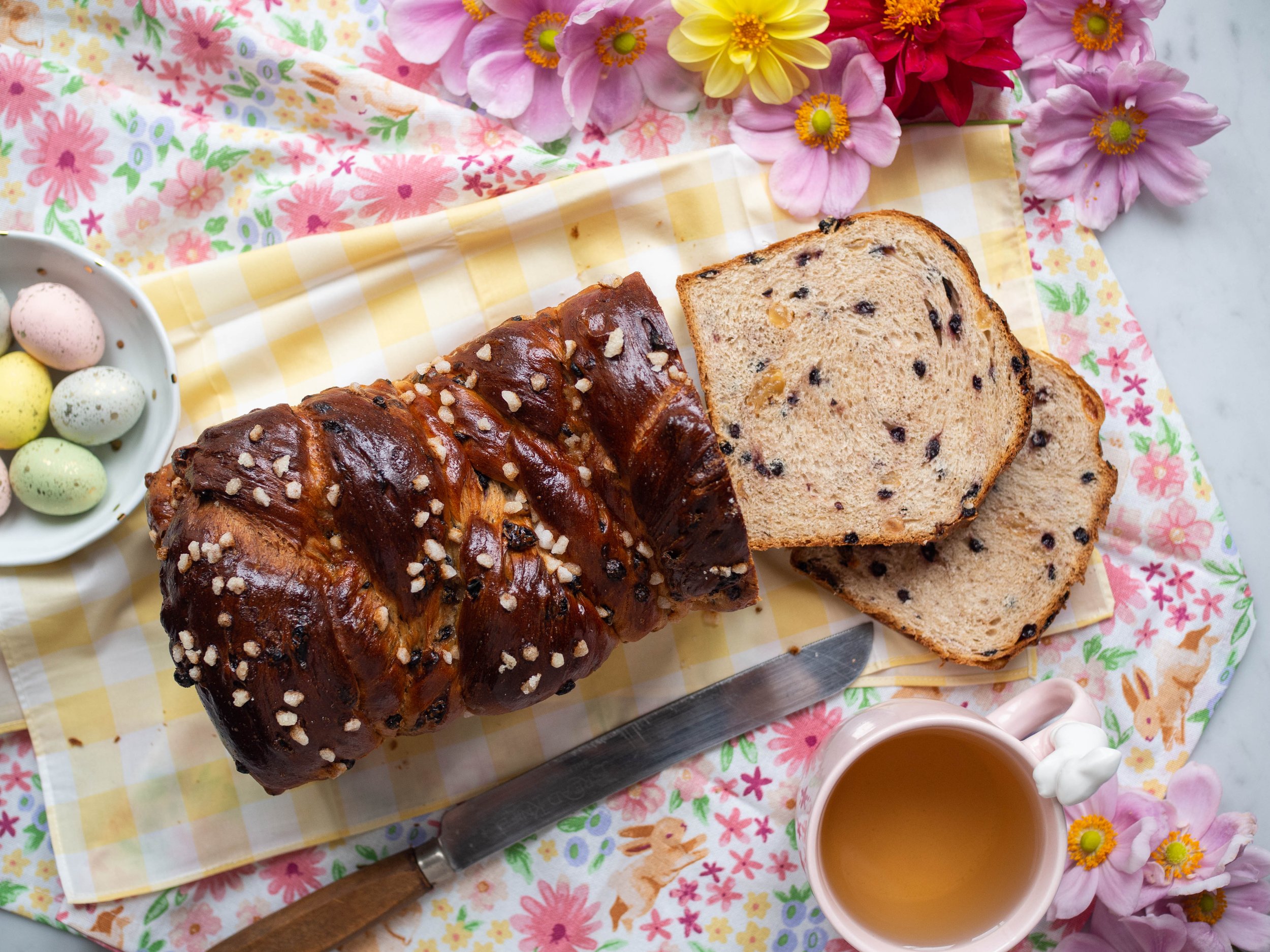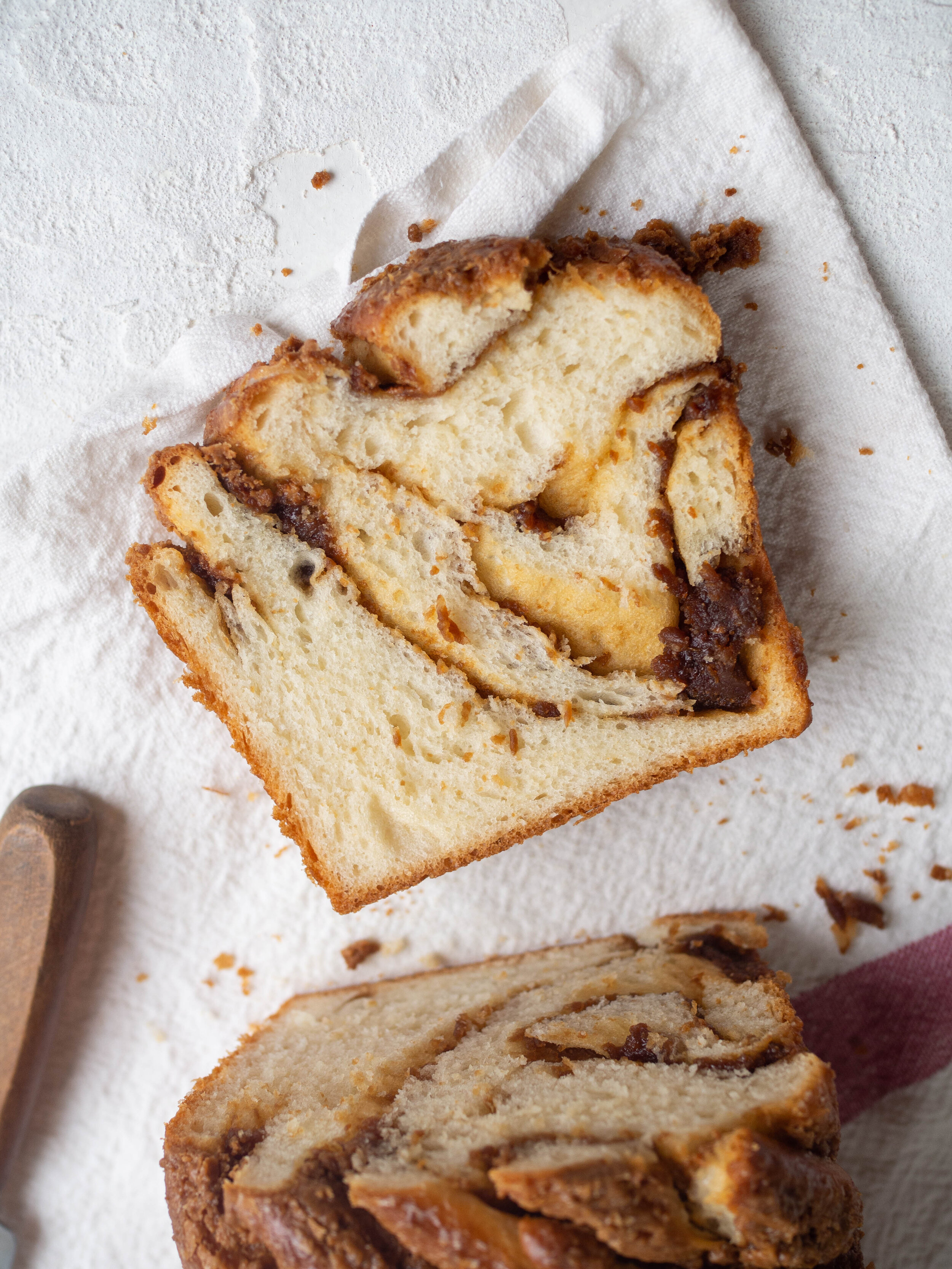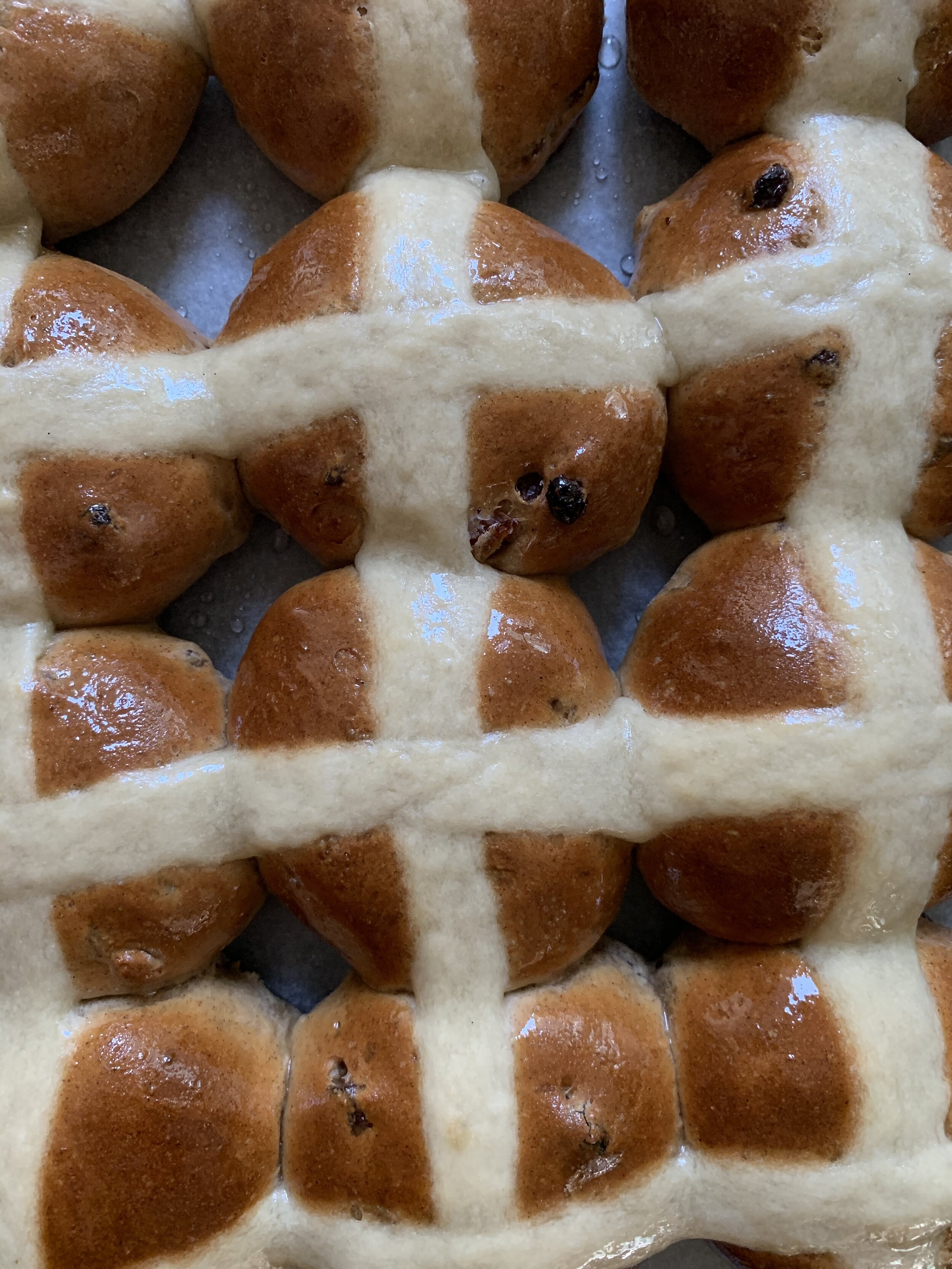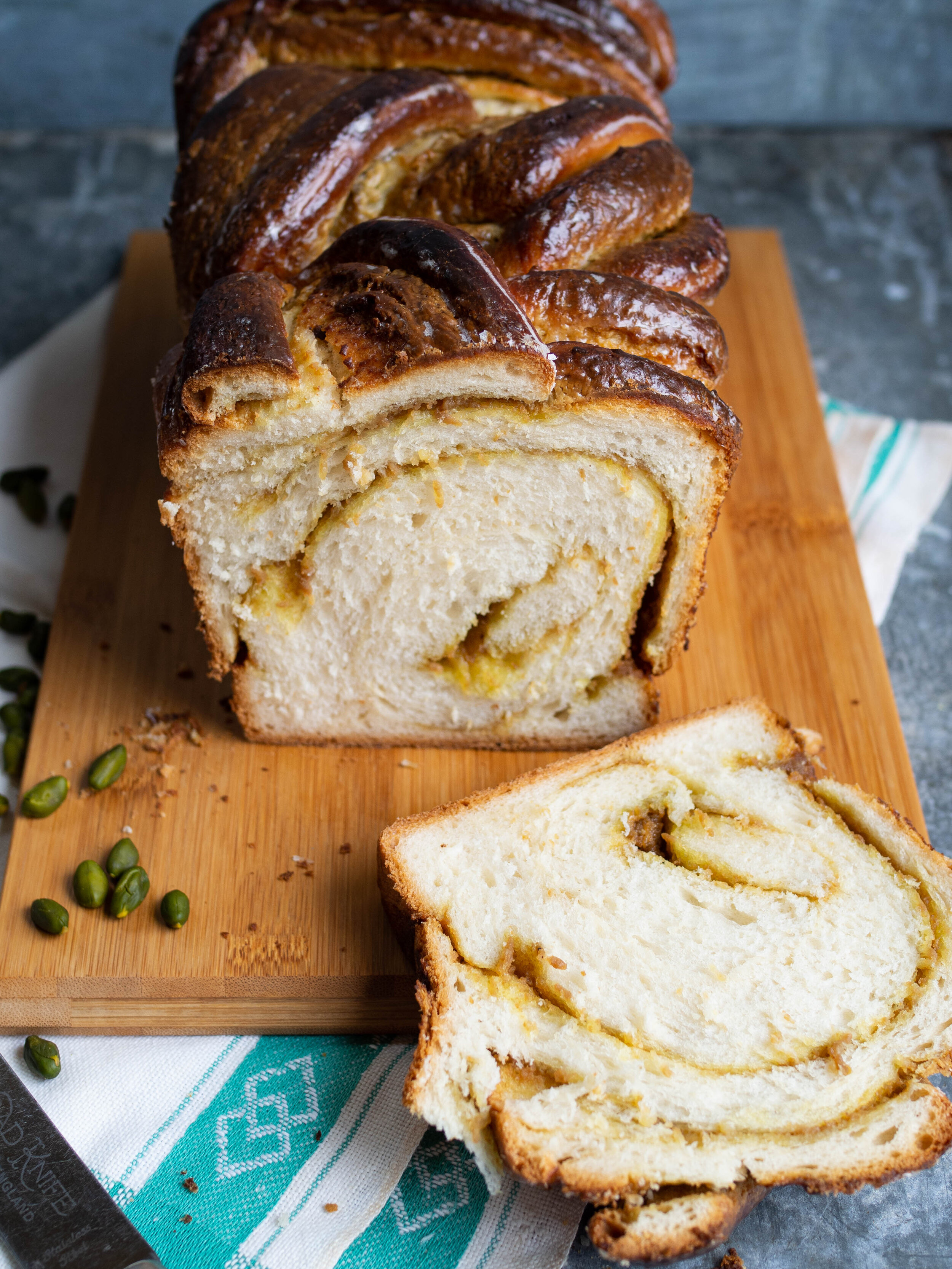I like hot cross buns, however they are quite fiddly to make. My least favourite parts of the process are rolling the dough into balls, and piping the cross over. I find the only way to get relatively even sized hot cross buns is to weigh the dough and divide by how many I am making (usually 12). Then rather painstakingly weight out the dough until each ball is about the same weight. I just find it annoying!
Even though the cross on the hot cross buns is quite easy, I do find so many elements can change the look of the cross. How thick has the mixture become (what was the temperature of the water added?), what size hole did I cut in the piping bag? I find I often get varying results even when I’ve made them time and time again. The cross also adds nothing flavour wise so I began wondering why I even bothered with it at all (I understand the point of it re religion, but for me hot cross buns are more about flavour).
This year I decided to make a hot cross bun loaf, which cancelled out a couple of the steps I dislike about making hot cross buns. I have also found the cut up loaf fits much nicer in the freezer, and toasting it in the toaster is much easier than getting the grill going, and having to defrost the buns before that.
You could of course still pipe a cross over the top before baking, however I chose to sprinkle the loaf with some pear sugar which holds its shape whilst in the oven.
Obviously making anything yeasted and bread based is going to take some time, but if I can cut out a few of the less necessary slightly annoying steps I’m happy. I’m also happy if I can just get my hot cross bun fix around Easter, and for me, they don’t need to be actual buns.
This recipe is very much based on the vanilla hot cross buns I made a few years ago, so they are decidedly uncitrus-y which is how I like them. You could add mixed peel, or orange zest if you like.
Hot Cross Bun Inspired Loaf
Ingredients:
100g golden sultanas or raisins (roughly copped if very large)
100g currants
2 tbsp vanilla extract
250ml milk
85g (golden) caster sugar
9g dried yeast
490g plain flour, plus extra
2 tsp ground cinnamon
1 tsp ground ginger
1 tsp ground cardamom
1/2 tsp ground nutmeg
1/2 tsp mixed spice
3/4 tsp salt
2 eggs
63ml canola, vegetable or sunflower oil, plus extra
1 tsp vanilla bean paste
cooking spray
Pearl sugar, optional
Method:
In a small bowl place the sultanas and currants. Top with the vanilla extract, then add enough hot water so the fruit is just covered. Set aside.
In a small saucepan gently heat the milk and 60g of the sugar. Heat until lukewarm, then remove from the heat and mix in the yeast. Leave for 10-15 minutes, or until the yeast has become foamy - if the yeast does not foam, it may be out of date and no longer active, or if the liquid is too hot it may kill the yeast. It is best to discard the liquid and yeast and begin again if this happens.
Place the flour, salt, spices and remaining sugar into a large bowl (one that fits your stand mixer if you have one), and mix together.
In a jug, whisk together one of the eggs with the oil and the vanilla extract.
Once the yeast is foamy, add to the flour mixture, along with the egg and oil mixture. Mix together with a wooden spoon until a rough dough forms.
Then attach the bowl to your stand mixer fitted with the dough hook, and knead on a medium speed for about five minutes. The dough will be smooth and a little sticky once done. If the dough is too sticky, add a little more flour (1-2 tbsp).
While the dough is kneading, lightly oil a large bowl and drain the sultanas and currants well.
Dust your work surface with flour and tip the dough out. Add the fruit mixture bit by bit and knead by hand to combine into the dough. Add small amounts of flour if necessary to counterbalance any moisture the soaked fruit has added and to make the dough a bit less sticky - the dough will be a bit sticky to touch, but it shouldn’t be really wet. There is no need to knead the dough for too long, as your stand mixer has done most of the work already.
Place into the oiled bowl and cover. Leave in a warm spot for 1.5 hours, or until the dough has risen and doubled in size.
Spray a 22 x 10 x 8.5cm (approx.) loaf tin* with the cooking spray.
Once the dough has risen, very lightly flour your work surface and tip the dough out. Divide the dough into three, and roll each portion into a long strand (about 10-15cm).
Plait the strands together, ensuring either end is well connected and tucked under if necessary. If the plait has become quite long push it from either end to reduce it’s size (so it will fit into your tin). Place into the prepared tin, cover and leave in a warm spot for about 30 minutes, or until the dough has risen.
While the dough is rising, preheat oven to 180 degrees Celsius.
Once the dough has risen, beat the remaining egg to create an egg wash. Brush the loaf over with some of the egg wash. Then scatter over some pearl sugar.
Bake in the oven for 40 minutes. Check after 20 minutes, and loosely place some foil over the top to prevent the loaf from over browning if necessary.
The loaf will be ready when it is golden on top, and sounds hollow when gently tapped. Remove from the oven, and place on a wire rack. Leave to cool in the tin for about 20 minutes.
Once the loaf has cooled a little, slide a spatula or flat bladed knife around the edges of the loaf to detach the loaf from the tin if it has stuck. Remove from the tin and allow to cool completely before cutting into about 12 slices.
Serves 12 (approx. - it will depend on how thickly you cut the slices!).
*a more bread baking style loaf tin rather than a cake loaf tin (which can be smaller) will work better for this recipe. The loaf tin needs to have fairly high sides to accommodate the bread rising in the oven. If you don’t have a loaf tin big enough, once the loaf is braided place on a lined baking tray for the second proof and then use the egg wash and bake as per the recipe instructions.




